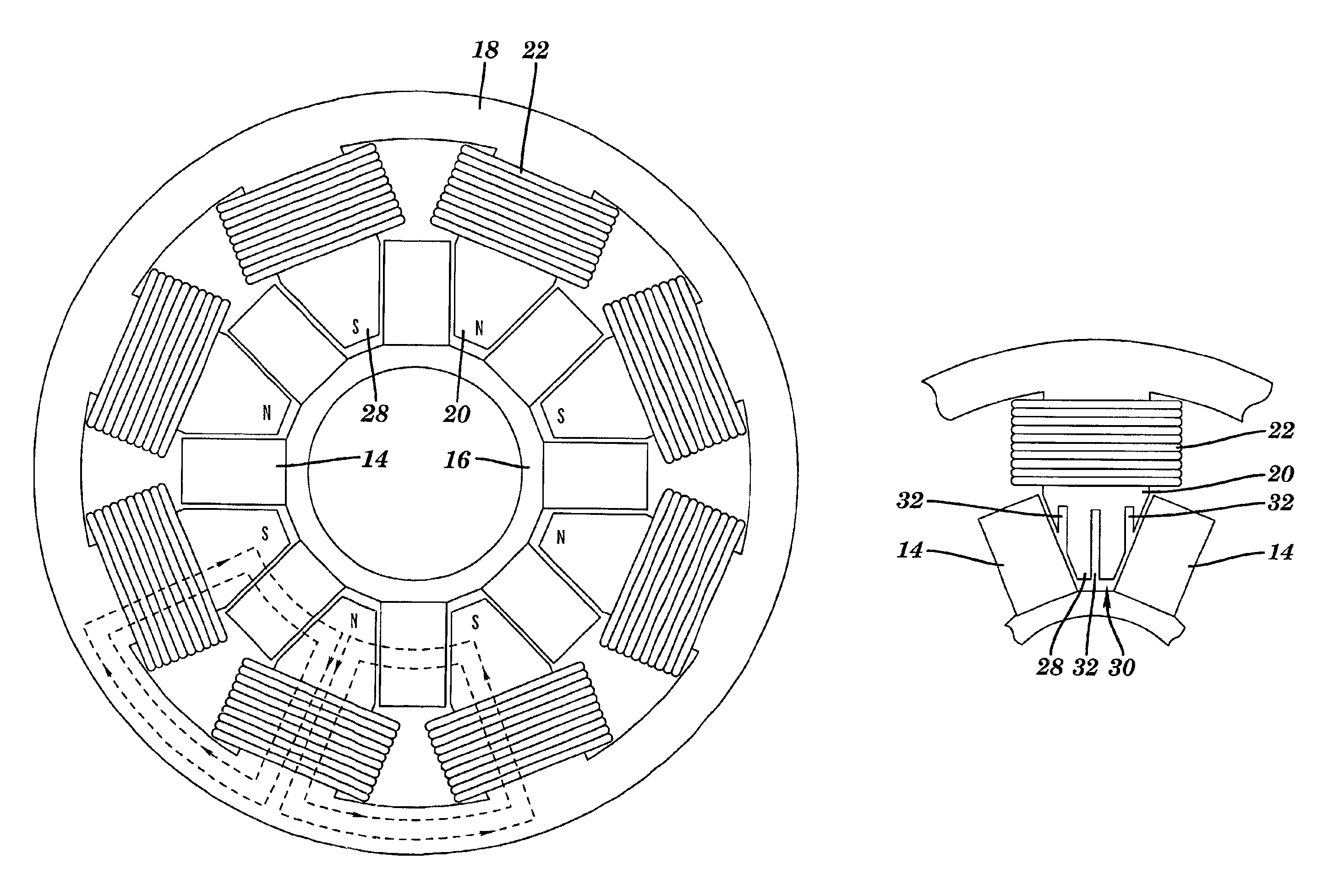Low loss reciprocating electromagnetic device
a reciprocating electromagnetic and low-loss technology, applied in the direction of dynamo-electric components, dynamo-electric machines, magnetic circuit shapes/forms/construction, etc., can solve the problems of thermal stability in operation, axially-laminated structures are not well adapted to mechanical load-bearing, and conductivity gives rise to losses called eddy currents, etc., to achieve better mechanical integrity, lower cost, and high efficiency
- Summary
- Abstract
- Description
- Claims
- Application Information
AI Technical Summary
Benefits of technology
Problems solved by technology
Method used
Image
Examples
first embodiment
[0040]According to the invention shown in FIG. 9, the lower-flux density pole tip region 28 of the device includes one or more interruptions. By “interruptions” is meant a discontinuity in the local electrical conductance of the magnetically-permeable material. One way of providing interruptions is by placing voids 30 in the pole 20. One mechanism for providing these voids 30 is by placing one or more slots 32 in the pole 20. Slots 32 preferably are substantially perpendicular to the laminations (themselves perpendicular to the reciprocation axis), and substantially aligned to the desired magnetic flux paths through the slotted part of the layered laminates. Of course, other voids 30 may be implemented depending on the desired routing of magnetic flux in the layered laminates. The reduction in eddy current losses have been calculated, based on some simplifying assumptions. In particular, the drag force resulting from eddy currents in the roughly-triangular pole tips 20 of a transver...
second embodiment
[0043]Referring to FIG. 10, according to the invention, the pole tip region where magnetic flux is not aligned well to the laminations and where magnetic flux density may be held lower than otherwise desirable in other parts of the stationary element (e.g., under the coils, to minimize resistive loss and iron mass), is replaced by a separate piece, formed from an insulated magnetically-permeable composite part 36 to provide an interruption. Such materials consist of small particles of iron or other magnetically-permeable material, separated and bonded by an electrically-insulating material, typically a polymer. An example is ANCORSTEEL by Hogaenes Corp. FIG. 10 shows such an adaptation on the device of FIG. 1, in which the formed composite part 36 also serves as a retainer for coil / winding 22. The interface between the insulated part and the laminations is sized and shaped into a keyed contact 37 that locates composite part 36 on the laminates of pole 20 and provides a transition ar...
PUM
 Login to View More
Login to View More Abstract
Description
Claims
Application Information
 Login to View More
Login to View More - R&D
- Intellectual Property
- Life Sciences
- Materials
- Tech Scout
- Unparalleled Data Quality
- Higher Quality Content
- 60% Fewer Hallucinations
Browse by: Latest US Patents, China's latest patents, Technical Efficacy Thesaurus, Application Domain, Technology Topic, Popular Technical Reports.
© 2025 PatSnap. All rights reserved.Legal|Privacy policy|Modern Slavery Act Transparency Statement|Sitemap|About US| Contact US: help@patsnap.com



